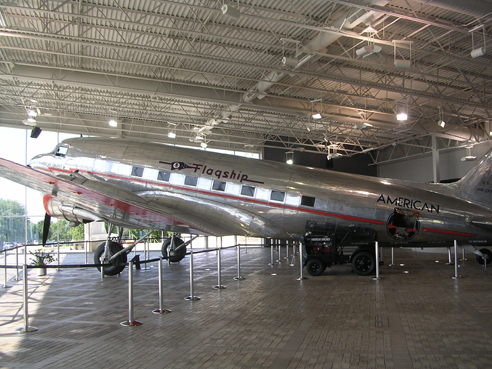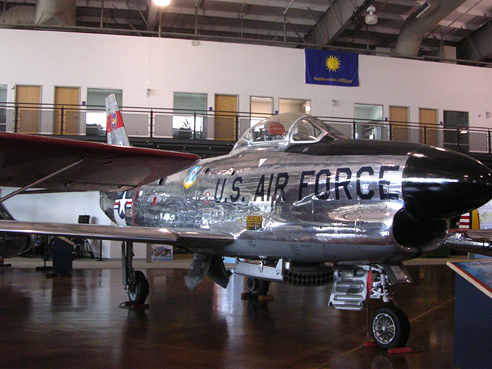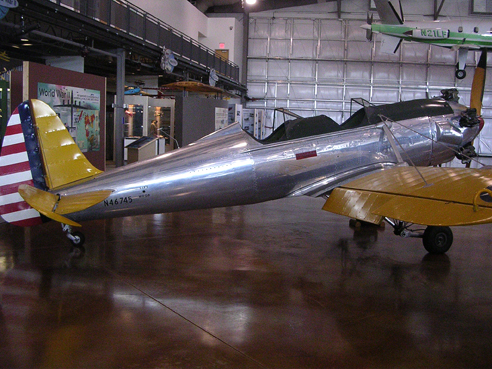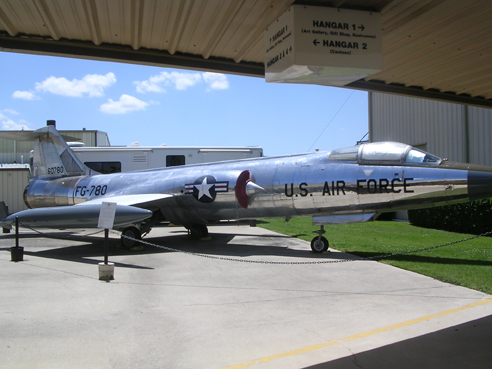By Jay Wischkaemper
If you ever have one of those soft, still voices that tells you it’s been too long since you’ve visited an aviation museum, but you don’t know quite where to go, we might just have a solution to your dilemma. One city. Three museums. Where does this wealth of aviation nostalgia reside? In none other than the Dallas metroplex.
Dallas is the home of lots of things, not the least of which are three excellent aviation museums. Two are located with easy to access general aviation fields, and the third, while taking a little more effort to visit, is well worth that effort. The three are the C.W. Smith Museum, which details the history of American Airlines and is close to the DFW Airport, Frontiers of Flight at Love Field, and the Cavanaugh Museum at Addison Airport.

I visited all three of these jewels in a recent trip to Dallas, and all can be easily seen in a day. My day started at the C.W. Smith facility. While GA pilots might be skeptical about visiting a museum highlighting the history of one airline, this one is well worth the visit. Located as part of the American Airlines operations complex a few miles southwest of DFW, the museum is easily accessible, but not well marked. In fact, the first time I wanted to visit it, I couldn’t find it. That situation has improved with well-marked parking areas for the museum, but the museum itself is still in disguise. It is across the street to the north of the parking lot, although there are no signs telling you what it is. You do have to go through a security check, and the person who gives you your badge will point it out to you. It blends in very well with the rest of the AA complex. Through the broad glass windows of the display area however, you can perhaps catch a glimpse of what is one of the best draws of the museum, the pristine DC3 that formerly flew the line for American. This aircraft is a perfectly restored example of the type, and visitors are allowed to climb the steep incline between the seats to visit the cockpit of this classic airliner. If nothing else, it gives you a deep appreciation for how far airline technology has come, and a look into what the people deal with who still fly these machines.

Back in the museum, there are various interactive displays regarding American and the airlines it has taken over through the years, including TWA and Ozark. Two of the more fascinating displays are that of a Wright turbo compound engine, which powered the DC7 and Lockheed Connie. Also on display is a modern turbofan jet engine. One of the more enjoyable parts of my visit to this museum involved watching the 15-minute movie that is shown every hour. This production features some beautiful aviation footage, including a formation flight involving a 767, MD80, and a DC6 over the foothills of the Tetons. Excellently done. The volunteers who staff the museum are former American employees, and are most helpful and knowledgeable. I had a fascinating visit with a gentleman who started his career in the DC3 and ended it in the 747.
 Next on the agenda was the Frontiers of Flight museum located on the southeast corner of Love Field. While this facility isn’t necessarily in close proximity to a particular FBO, if you were to park at any of the facilities on the east side of Love, it would be within walking distance -- as long as you consider half a mile walking distance. Chances are you could get a ride to it if you didn’t want to walk. This museum has been around a while, but the facility it now occupies has been recently been built. According to information provided by the museum, “The Frontiers of Flight Museum was founded in November, 1988, by Kay Bailey Hutchison, Jan Collmer, and William E. Cooper. Their initial intent was to exhibit at Dallas Love Field the priceless artifacts, documents, and photographs of the History of Aviation Collection donated to The University of Texas at Dallas by the legendary aviation historian George E. Haddaway. Since 1988, the Museum has added to the Collection extensive artifacts dealing with the history of aviation from earliest days through today's modern military, commercial, and aerospace vehicles.” Next on the agenda was the Frontiers of Flight museum located on the southeast corner of Love Field. While this facility isn’t necessarily in close proximity to a particular FBO, if you were to park at any of the facilities on the east side of Love, it would be within walking distance -- as long as you consider half a mile walking distance. Chances are you could get a ride to it if you didn’t want to walk. This museum has been around a while, but the facility it now occupies has been recently been built. According to information provided by the museum, “The Frontiers of Flight Museum was founded in November, 1988, by Kay Bailey Hutchison, Jan Collmer, and William E. Cooper. Their initial intent was to exhibit at Dallas Love Field the priceless artifacts, documents, and photographs of the History of Aviation Collection donated to The University of Texas at Dallas by the legendary aviation historian George E. Haddaway. Since 1988, the Museum has added to the Collection extensive artifacts dealing with the history of aviation from earliest days through today's modern military, commercial, and aerospace vehicles.”

The Frontiers of Flight Museum has around 25 aircraft on display, and is worth seeing. The collection is eclectic, with several military jets, including two Chance-Vought examples that have been restored by the same people who built them in the DFW area. Civilian aircraft include a Staggerwing, Cub, Christen Eagle, Thorpe, and Ercoupe. A Lear Fan hangs from the ceiling. There are also a couple of WWI aircraft. On the north end of the facility is a nose section of a 737 donated by Southwest Airlines. If you have kids or grandkids, there is an extensive play area for them.
|